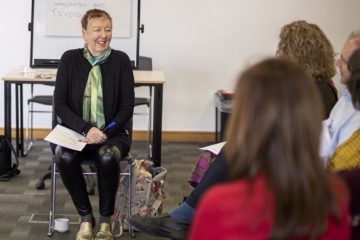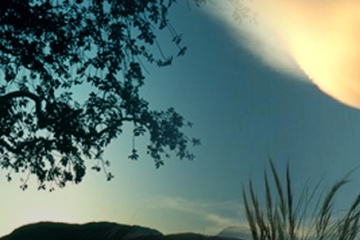The evolution of coaching (Part Three) – The positivity bias in coaching
Why an article about the positivity bias in coaching? Surely coaching is about accentuating the positive, bringing about positive change in people’s lives? Working towards desired goals and outcomes, realising inner potential and supporting personal growth? Well, yes on one hand there is a natural or default emphasis or bias towards the positive in coaching. There is a great deal of recent psychological research that shows the benefits of leaning into the positive, holding positive attitudes, ideas and images in our consciousness, focusing on strengths rather than weaknesses, being unrealistically optimistic rather than realistically pessimistic as a default outlook towards the world and so on.
And on the other hand, if we are coaching the person and not the problem, if we are working as a developmental or holistic coach (as described in the first post in this series) towards self-realisation and self-actualisation, then part of our challenge is to hold a space for the coachee as a whole person, which includes the light and the shadow, positive as well as negative emotions, both what they are struggling with and what is emergent or in potential. I want to use this post to explore the ambiguous or paradoxical nature of coaching, the polarity tensions that may be present for the coachee and how we work with them in the coaching space.
Why is this in the news?
Let’s start by looking at the push back against a narrow or unthinking positivity that shows up in some coaching. In my previous post I referred to a number of articles in the mainstream media which were primarily exposing the unregulated nature of the life coaching industry, but there was also criticism of the coaching profession for what might be described as a single mindedness or blind focus on the positive and performance, which can be detrimental to the wellbeing of some coachees.
For example, in an Observer article about dangers and malpractice in the life coaching industry, Eleanor Morgan questions the value of coaching’s emphasis on building confidence or self-esteem by using techniques of positive psychology and the pathologizing of self-doubt with terms such as imposter syndrome. It might be argued that self-doubt is a natural and even healthy state of mind and that coaching sometimes seems to be seeking to eradicate or replace it with a blind confidence which may itself be less than healthy. My colleague Anne Welsh reminds me that by starting with self-awareness and working on self-acceptance, we can support coachees develop more enduring foundations for increased self-esteem [I have touched upon this elsewhere (Howard 2020, p100] and will write more about it soon in a piece about the seven light and dark arrows.].
I promised I would pick up on the discussion about the positivity bias in this, my next post. This is touching upon a complex topic which is easily treated too superficially, as in such exposé type articles by journalists looking for a story or equally by those promoting the profession with simplistic case stories and success statistics.
The complexity comes from the reality that every example or experience of coaching is different and can vary enormously according to the context within which it takes place, the contract that is established between coach and coachee, the psychological health, history and development of the coachee, and the experience, training, development and awareness of the coach.
We seek to reduce the complexity of coaching in a number of ways to both help the coach manage the situation more easily and to deliver more effective outcomes for the coachee. Most typically this takes the form of coaching approaches, methods and models to provide overall structure, shape and direction to the coaching process within a session, and also specific tools and techniques that the coach might draw upon within the coaching session.
Coaching as a way of being
Alongside structure, the coach is also showing up and being present in an open, receptive or responsive way – with their presence and ways of being, holding the space with empathy, compassion and curiosity, responding to what the coachee brings in whichever way is appropriate. The coach’s capacity to hold the space and work in this emergent way with the coachee will depend upon many things, including their experience, training, development and maturity, but also their willingness and ability to stay with the discomfort of not knowing, holding ambiguity, opening to the void, the silence or the gap.
The dynamic balance between bringing structure on one hand and holding the space and responding to what the coach brings will be different for each coach. Our training courses lean towards developing the coach’s capacity to work with emergence although we also provide enough structure, models and tools to give comfort to the mind and provide something to fall back on when we get lost in the flow of the coaching session.
Some coach training organisations and coaching service providers might seek to bring about more conformity of approach or reduce the risk of coaches straying off-piste into areas they are not equipped for by training the coach to closely follow a proscribed method with a rules-based approach. This can be helpful for very new coaches without a base of skills from previous roles or for when an organisation is seeking some consistency of approach, but there is also the risk that the coach takes too much control over or responsibility for the coachee, or desensitises themselves to signals and cues within the coaching space. Too rigid a framework may also inhibit the coach from learning to trust their own intuition and limit their ability to listen inwardly alongside the outer inquiry.
The quest for the magic bullet
Alongside whatever training the coach has received, there is a never-ending flow of new ideas, approaches and techniques, entering the coaching space from a variety of disciplines. Coaches obviously need to stay open to learning new ideas but we should also be aware when we are tempted by quick-fix promises or magic bullet techniques which end up become distracting, dominant or distorting.
In the early days of coaching there was a strong behavioural change bias fed by NLP and cognitive-behavioural psychology, alongside humanistic psychologies such as TA and Gestalt, as well as coaching specific models such as Solutions Focus, CLEAR and GROW. More recent trends include positive psychology, mindfulness, trauma work, resilience and well-being management, neuroscience and neuropsychology, narrative and nature, somatic and constellations approaches. Our own field of psychosynthesis psychology is also a rich source of techniques and approaches that have entered the mainstream, including parts work (subpersonalities) and guided visualisations. [For the most complete source of such psychosynthesis techniques see Petra Guggisberg Nocelli’s Two Volume work: Know, Love, Transform Yourself.]
The point here is that any of these approaches or techniques can be useful depending upon when and how they are used, in turn depending upon the experience, skills and awareness of the practitioner. Problems occur when the latest fads are used uncritically or insensitively, or when coaches become fixated with techniques because they appear to deliver immediate results or maybe they want an energy boost for the coachee.
Eleanor Morgan describes the current trend of using terms such as ‘manifesting’ and ‘magnetism’ which broadly equate to positive thinking. Variations of such approaches have been around for decades, for example with the positive thinking of Dale Carnegie, Napoleon Hill and Norman Vincent Peale, perhaps peaking with EST seminars and Tony Robbins mass events. Of course, all these can bring something of value because they draw upon psychological and spiritual truth which is eternal and universally available. It often amuses me how Roberto Assagioli’s wisdom from more than 50 years ago, for example about the power of ‘acting as if..’ and the use of ‘visualisation techniques’, are now being rediscovered in new ways and even backed up by neuroscientific evidence.
Systemic organisational paradigms
At another level, we need to be aware of the systemic biases and worldviews that influence the way that coaching works, the mindsets and expectations of the coach and the coachee. A strong bias towards positivity (either held by the coach or the coachee or both) usually appears within what we have described as performance coaching, which itself is an expression or instrument of the Achievement paradigm orMultiplistic worldview as described in any stage development models, including those offered by Harthill’s Leadership Development Framework, Frederic Laloux’s organisational paradigms, Clare Graves’ value systems and Ken Wilber integral analysis. If you are unfamiliar with such models of worldviews, I refer you back to the first article in this series or Chapter 13 of my book (2020).
The Achievement paradigm is dominant in most organisations, particularly businesses and usually shapes the very tone and context of the coaching conversation. Within this paradigm, I would suggest that a psychic or psychological split has taken place in coaching which can leave parts of the human being out of the picture. This can be so unconscious that both coach and coachee are not be aware that it is happening. Why this has happened is partly the accident of how coaching has evolved, particularly from sports coaching which is fixated with winning but also the desire to delineate coaching from therapy – so coaching became about creating the future and therapy healing the past, coaching encourages positive emotions and therapy deals with difficult emotions. With developmental and holistic coaching we are seeking to heal this psychic split and allow the whole human being back into the coaching space.
A story of our times
Where the positivity and performance bias within the Achievement paradigm can lead is illustrated by in a recent story about “Prince Harry’s” BetterUp, where the bubble seems to have burst around an attractive business model with opportunities for wanabee coaches, with headlines in like: “Valued at nearly $5 billion, the “mental fitness” startup BetterUp has faced weeks of turmoil after it abruptly changed the pay structure for its career coaches”. The article tells a story of the dark side of coaching where everything seems to be about immediate impact and performance – where the coach is paid according to the likes they get from their coachees. Some of their 2,500 plus coaches are now asking whether this is the kind of coaching profession they wanted to be part of. Nevertheless, it is interesting in itself that the tech start-up model has become a part of the coaching profession. Is BetterUp good or bad for our profession? I am encouraged by the espoused values and the language of the ‘whole person’ and ‘transformation’ on their website but an unrelenting emphasis on results may make it difficult for these values to be lived. I would be interested to hear other people’s experience or views about BetterUp.
Another example of uncritical adoption of the latest new fad or techniques is the way in which mindfulness can be used to ‘prop-up’ pressurised organisations and keep their over-stressed people delivering as part of resilience or wellbeing coaching. In a Medium article ‘The dark side on mindfulness no one is talking about’, Mehboob Khan challenges the unwavering focus of mindfulness on being present and encourages us to listen to our full range of emotions including the painful ones and not to be scared of living in the future and daring to dream, as well as in the present or even the past.
I should point out in passing that the increasing popularity of mindfulness, resilience and self-care techniques within the context of the well-being and mental health management is mostly to be welcomed as a sign of the shift from performance to holistic coaching, away from the achievement to the more humanisticparadigm, which is enabling the whole human being slowly back into the workplace. The reference above is an example of how these techniques can become distorted and serve other purposes.
Polarity and synthesis
To offer an antidote or alternative to the blind positivity or performance bias that sometimes dominate coaching, I want to draw upon Assagioli’s work on the principle of polarity in evolution. This concerns the psychospiritual process of synthesis which takes place when we hold the tension of polar opposites and seek something emergent, not simply a compromise between the two but something which honours and transcends both. I have recently written more fully about this topic of working with polarisation and synthesis (Howard, 2022).
What happens when we only emphasise one side of any polarity – e.g. one aspect of our experience (e.g. thoughts but not feelings) or one dimension of our consciousness? When we only emphasise the positive, the coachees strengths and their success? The other principle becomes ignored, suppressed or distorted but it hasn’t gone away. This might work in the short term in coaching but not if we want to take a developmental or holistic perspective. We need to include the whole person, even where there are splits and distortions, however these show up in the coaching space.
There is a corollary of the positivity bias in coaching within organisational development, which is the change bias, or the implicit assumption that all change is positive, good and desirable. If we consider the way the polarity between change and stability has played out over the last 30 years or more in organisations, the dominant paradigm has been heavily weighted towards the imperatives of the change polarity, perhaps to the neglect of the needs of the stability polarity and I think this has caused much collateral damage as a result. As part of the organisational change profession, I was very much implicated in this for many years. In hindsight I feel that we were mostly asking the wrong questions; for example, instead of “how do we bring about the change we want?” it might have been better to ask “what is the dynamic tension between change and stability in this situation? What new synthesis will transcend this and how do we enable that?”
Both and
As coaches, I suggest we need to hold both the light and the shadow for our coachees, be open to exploring both psychological height and depth with them, to be accepting of both success and failure, to help the coachee open to both their strengths and their vulnerability. And we are always doing this in the here and now, working with the being and doing of the coachee, in present-centred awareness and dynamic adult-adult conscious relationship, holding potential and their capacity to be creative, resourceful and whole. In developing our capacity to hold both-and rather than either-or in a non-judgemental way, we are opening to the emergent and the possibility of transformation.
This doesn’t mean, for example, that we work on healing the past in the way a therapist might, simply that we support the coachee to become aware of how the past might be impacting the present for them and to come into a present-centred adult relationship with their own history and mirrors of the past. Equally, sometimes what is needed is simply to move on from the past and lean into the positive – to support the fragile emergence of hope, self-acceptance and willingness to take a risk, to build the experience of will for the coachee by supporting small steps towards a goal that starts to realise their highest potential.
The emphasis in our holistic training approach is on the need for coaches to develop psychospiritual awareness, work with the whole person and meet the coachee where they are. This requires patience and openness at a new level – that includes tolerance of uncertainty, acceptance of ambiguity and awareness of complexity. I have found this psychologically mature and aware approach to coaching is just as relevant and applicable for new as for experienced coaches. It is increasingly what is being called for from coaching and is urgently needed in the VUCA world of leadership. Let’s work together to give more leaders the choice to work in this way.
To find out more about psychosynthesis and our coaching accreditation pathways, please come to one of our online Taster Saturday events, hosted by Anne Welsh.
References:
Howard, Aubyn (2020), Psychosynthesis Leadership Coaching, Abingdon: Routledge
Howard, Aubyn (2022), Working towards synthesis: context, guidance and techniques for engaging with polarisation. Chapter 21 in Nocelli, Petra Guggisberg (2022) Know, Love, Transform Yourself. Theory, techniques and new developments in Psychosynthesis, Vol. II, Psychosynthesis Books
Articles:
Daily Beast, Noah Kirsch and Kate Briquelet (2022): https://www.thedailybeast.com/a-revolt-is-brewing-at-prince-harrys-silicon-valley-gig-betterup
Guardian, Rachel Monroe, 6 October 2021: https://www.theguardian.com/lifeandstyle/2021/oct/06/life-coaching-brooke-castillo-unregulated-industry
Observer: Eleanor Morgan, Sun 10 Jul 2022: https://www.theguardian.com/music/2022/jul/10/the-cult-of-confidence-could-positive-thinking-be-making-us-feel-less-secure-?CMP=Share_iOSApp_Other
CBC MARKETPLACE: https://www.cbc.ca/news/canada/marketplace-life-coach-1.6364745
Medium: Mehboob Khan, Dec 30, 2020 The Dark Side Of Mindfulness No One is Talking About: https://theapeiron.co.uk/the-dark-side-of-mindfulness-no-one-is-talking-about-96b292cf4ada



